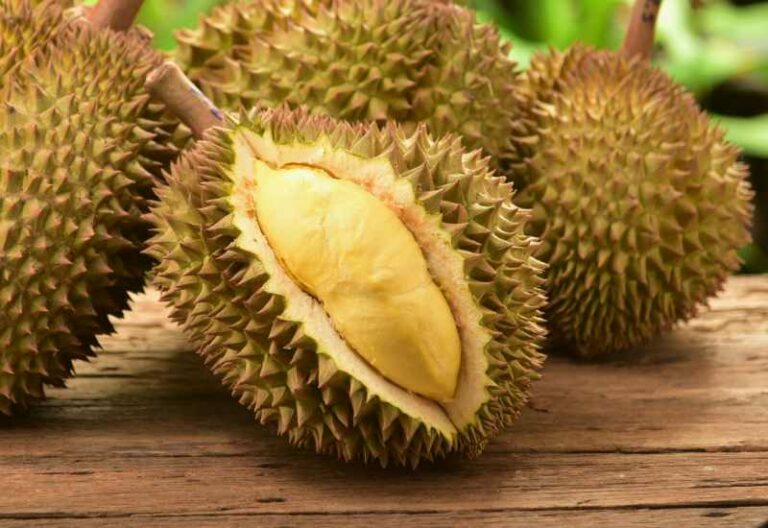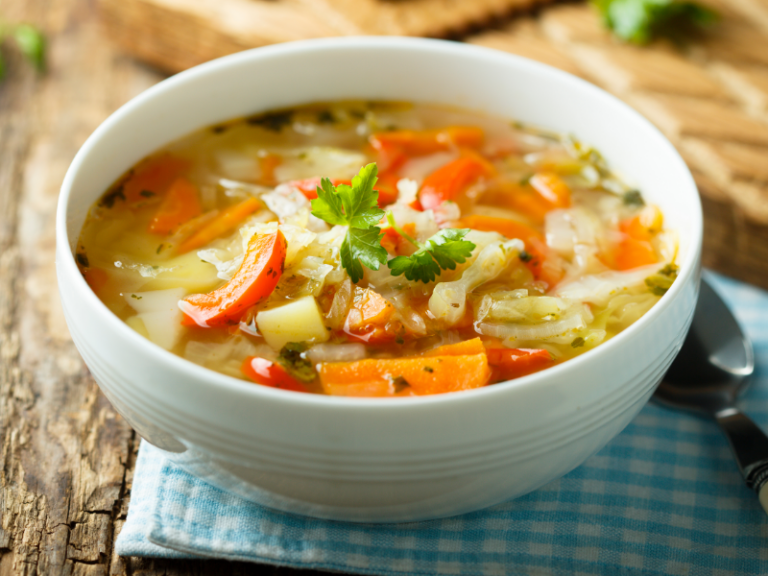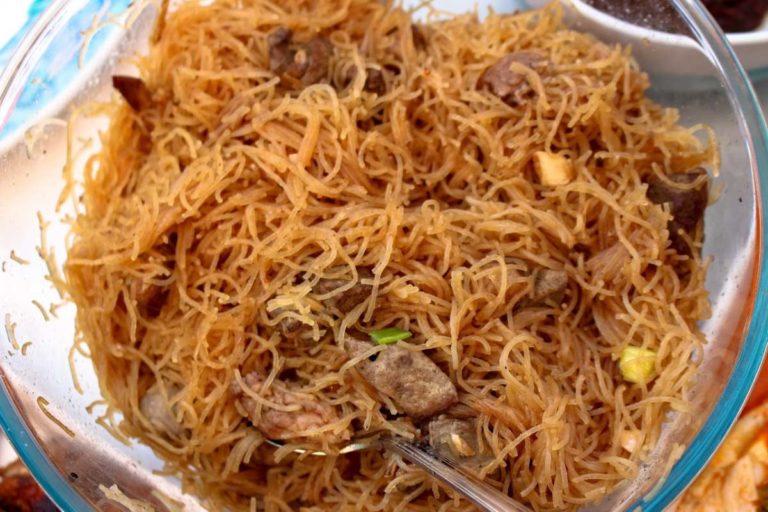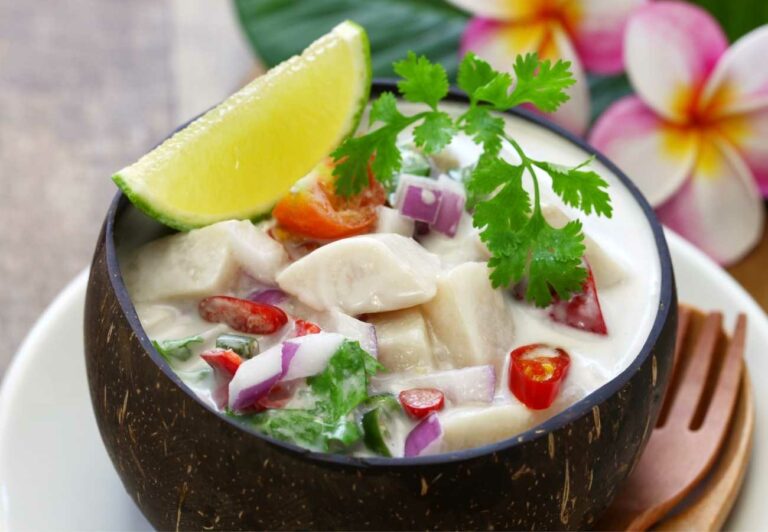Samoan Food: 12 Traditional Dishes of Samoa

Samoa is a group of 12 islands in the South Pacific Ocean located somewhere between Hawaii and New Zealand. Hawaii is about 2,500 miles North East and New Zealand, about 2,000 miles South West of Samoa.
Only 4 of the 12 Samoan islands are inhabited. It has a population of 200,000 which is surprisingly small for the total land area of Samoa. By comparison, the city of Los Angeles in California is half the size of Samoa but has a population of almost 4 million people.
Samoa has a growing tourism industry due to its stunning scenery and preserved traditions. The islands are abundant with caves, waterfalls and sandy beaches to enjoy and explore. Samoa also has a growing presence in pop culture having produced many athletes and being featured in films and media.
Some traditions which are still practiced in Samoa are Siva Afi or fire dancing, living in villages and umu cooking. An umu is traditional above ground oven which is heated with volcanic rocks.
Samoan cuisine is almost entirely based on local ingredients. Staple foods include root vegetables especially taro, potatoes, breadfruit and rice. Coconut is a part of many dishes, particularly the coconut cream. Proteins are meats like chicken, pork and lamb.
There are hundreds of seafood species so fish is plentiful. Samoan food would not be complete without mentioning the abundance of fruit grown and eaten on the islands. These fruit include starfruit, sugarcane, passion fruit, guavas and of course the better-known pineapple, mango, papaya and bananas.
Palusami
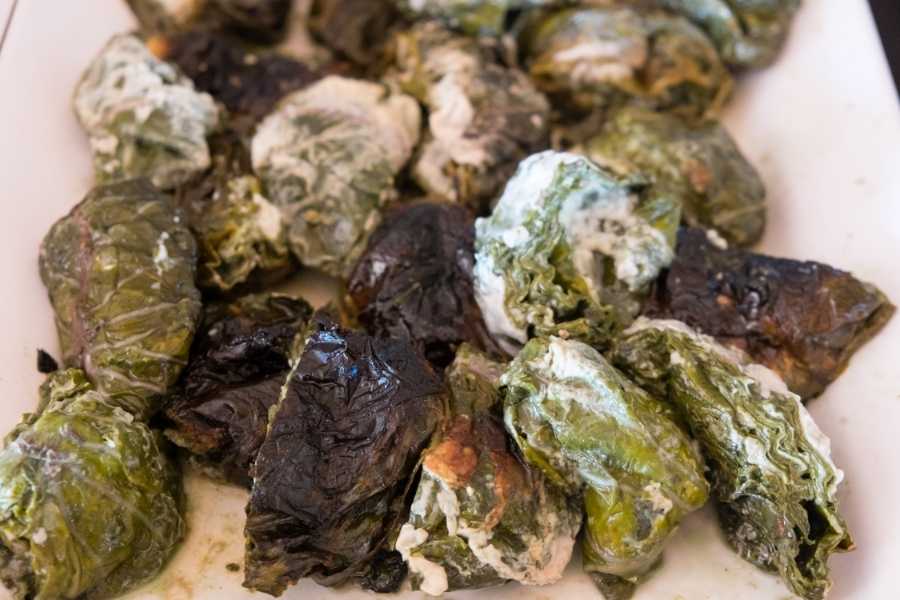
Palusami is a dish of coconut milk and onions wrapped in taro leaves which are cooked by baking or steaming. Taro is a root vegetable. Its leaves are edible only after cooking properly.
Some variations of Palusami are made with fish, chicken or corned beef and spinach is substituted when taro leaves are not available.
Fa’alifu Kalo
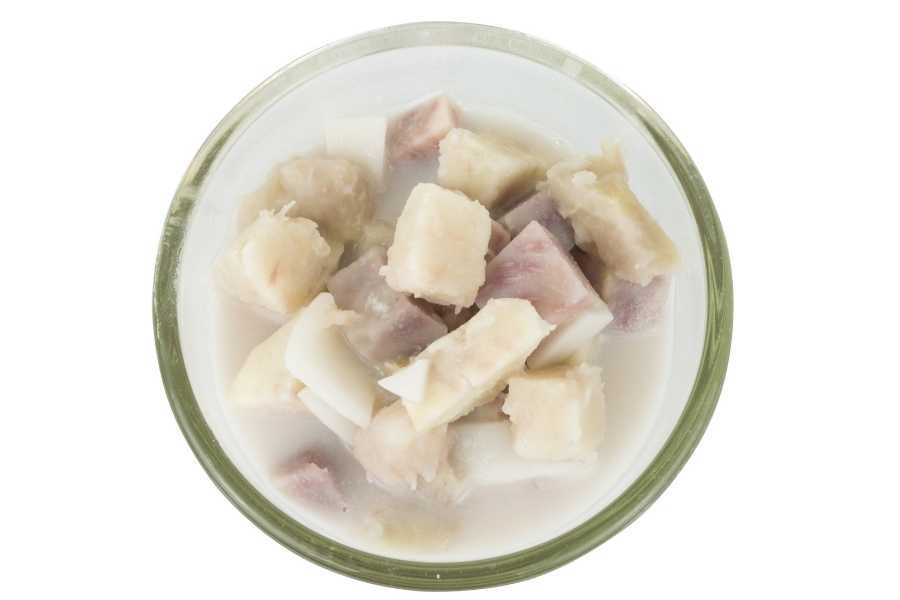
Fa’alifu Kalo is a dish of cooked taro. The taro is boiled until it reaches the desired tenderness. The water is drained and replaced with a coconut cream sauce. The taro is simmered in the sauce for a few more minutes before serving.
The Samoan word for taro is Kalo and Fa’alifu refers to how it is prepared.
Faiai Eleni
Faiai Eleni is a dish consisting of fish and coconut cream. In the traditional method, the coconuts are cracked open and the white pulp is scrapped out. The fish which is usually mackerel or tuna is mixed with the coconut cream which is extracted from the scrapped-out pulp. Chopped onions are added and the mixture is scooped into the now empty coconut shells. The mixture is cooked in the shells. Faiai Eleni is served with taro.
Sapa Sui
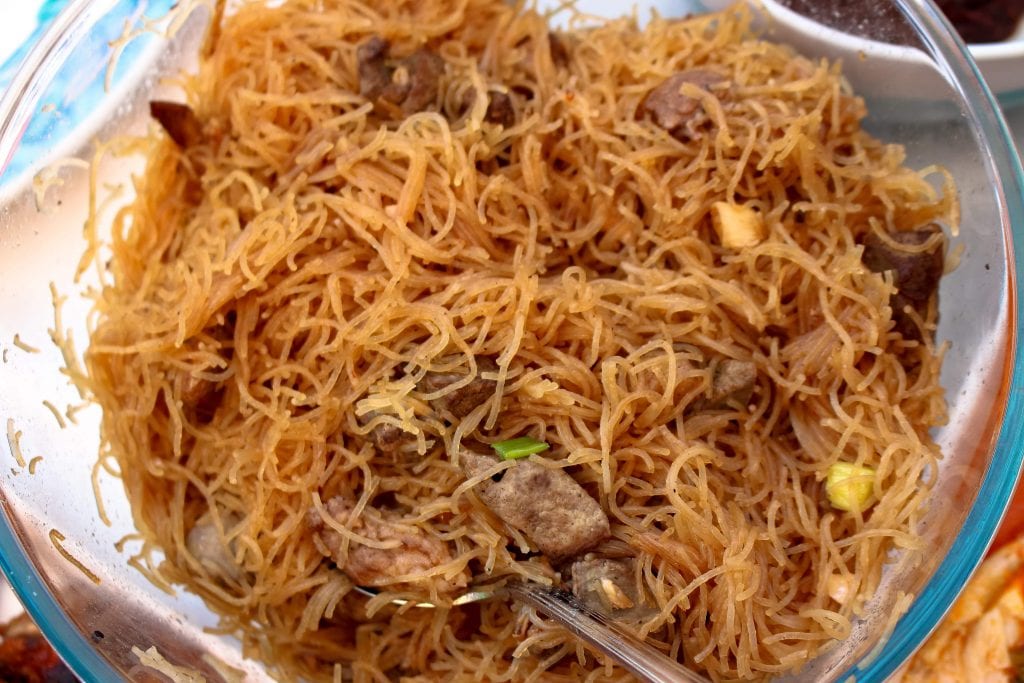
Sapa Sui is a noodle dish which consists of a combination of meat, stir fried vegetables and aromatics such as ginger and garlic. The meat which can be beef, chicken pork or lamb is cut small and is usually one of the first ingredients added to the cooking pot. The other ingredients are added in steps, which the noodles being added last.
Sapa Sui is often compared to the Chinese chop suey.
Falai Mamoe
Falai Mamoe is a Samoan style stir fried lamb. Lamb pieces are boiled then drained. The lamb is then stir fried in onions, oil, garlic and soy sauce until brown and slightly crispy. Chopped bok choy is added last. The lamb is served over white rice.
Lamb flaps are usually used to make this dish. The flaps come from the chest or breast area of the lamb. It’s a tough cut of meat, hence why it is cooked twice.
Vaisu
Vaisu is a traditional way of preparing fish. Whole fish as roasted over an open flame. The fish is not sliced open and the scales are not removed. After roasting, the fish is cooked again in coconut cream with onions and flavorings.
Kale Moa
Kale Moa is the Samoan chicken curry. Like many Samoan dishes. It features coconut flavors but is only lightly curried. Other flavorings used to make Kale Moa are garlic and ginger. Besides chicken, the curry also has potatoes and vegetables. It is usually served over rice.
Kopai
Kopai are a variety of Samoan dumplings. There are different ways to make the dumplings but it usually consists of wheat flour, sugar, water or coconut milk. The ingredients are mixed into a soft dough. The dough it portioned into smaller pieces, then cooked.
For Kopai enaena, the dumplings are cooked in a caramel sauce. Enaena means brown. Kopai koko have a rich chocolate flavor. Koko is the samoan word for cocoa, from which chocolate is made. White kopai is the purest form of this dumpling as it is cooked only in coconut milk with no additional flavorings.
These dumplings are enjoyed at anytime and if anything, as a comfort food.
Fa’apapa
Fa’apapa is a sweet coconut bread. The dough is made from flour, coconut flakes, coconut milk and sugar. The dough is then baked. Fa’apapa is a heavy bread with dense texture however in recent years, adding baking powder has become a trend. The result is a Fa’apapa that is light, fluffy and easy on the teeth.
Fa’ausi
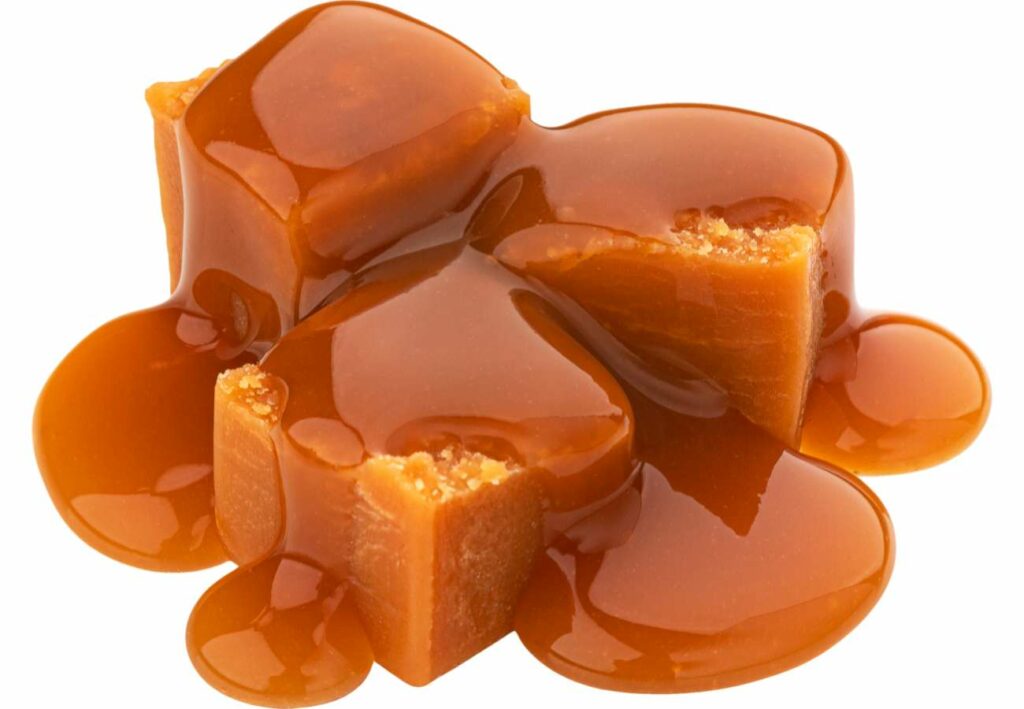
Fa’ausi is a dessert dish consisting of Fa’apapa bread covered in a coconut caramel sauce. The coconut caramel sauce is made using coconut milk, sugar and water. Fa’apapa bread is cut into small pieces and covered with the sauce then left to sit for about an hour so that the bread can soak up the sauce. It’s like a decadent Samoan version of bread pudding.
Kava
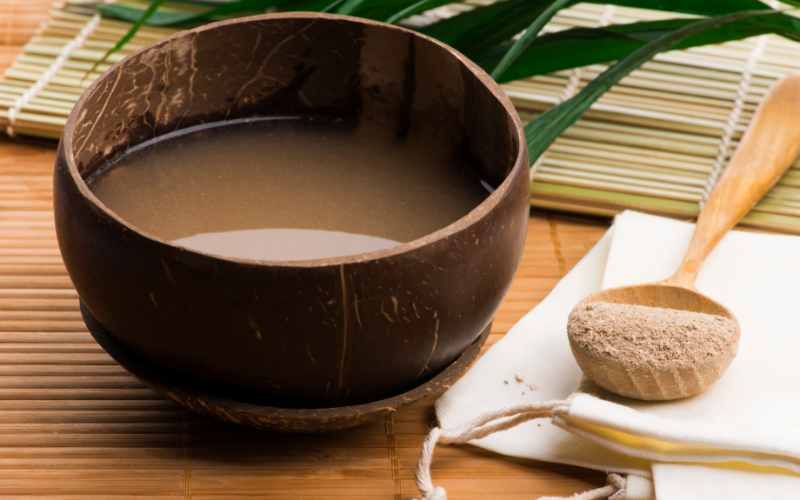
Kava, also called kava kava, is a beverage prepared using the crushed, ground, or powdered root of the kava plant which is soaked in water. Pacific Islanders have been using it for hundreds of years.
Kava is believed to act in a similar way to alcohol on one’s brain, making the person feel calm and relaxed. However, kava is also believed to have several health benefits, like relieving pain, preventing seizures and relaxing muscles.
Kava is generally consumed in traditional ceremonies and cultural events in the Pacific region. In Australia, it is limited to medicinal purposes only. As well as from Samoa, kava is also considered to be a delicacy in Tonga, Hawaii, Micronesia, Fiji and Vanuatu.
Ika Mata
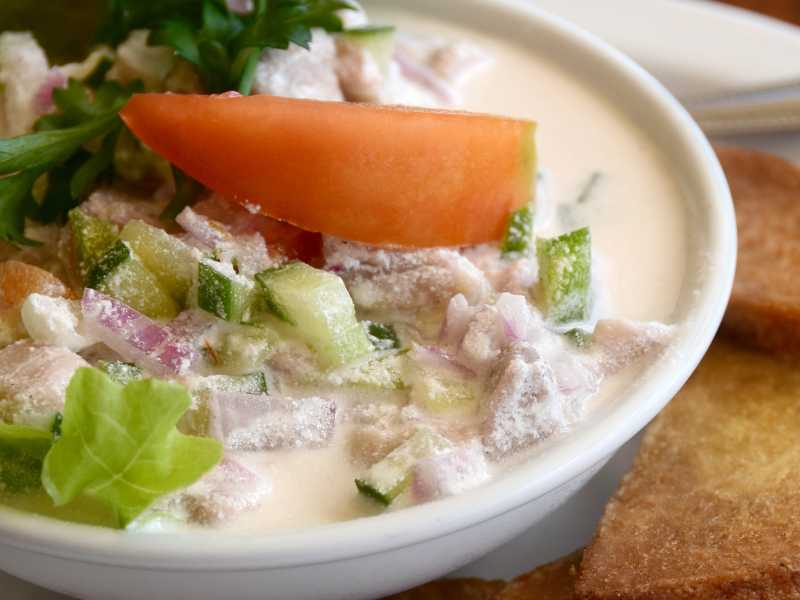
Ika mata is a traditional Polynesian dish which consists of raw fish. The fish is cut into bite sized pieces and marinated in citrus juice and salt. After marinating, the fish is tossed with vegetables and coconut cream to finish.



